While the Spitfire will always be my favorite airplane from World War II, I’ve always had a fondness for the P-47. It just seemed to define toughness. Unlike most of it’s contemporaries, there was nothing sleek or subtle about the Thunderbolt. It dwarfed everything else. It could take punishment that would have sent other planes spiraling to the ground. It’s ability to mix it up in a dogfight, or to drop huge amounts of payload as a close-air-support aircraft was just about unmatched.
Revell’s 1/48 P-47N captures the last of the big airplane’s line to see combat. It was designed as a long range escort for B-29s, with a new wing that added additional fuel capacity, boosting it’s range so that it could fly and fight with B-29s. It’s not a bad kit at all, especially given it’s price- $22.49 at Squadron, as an example.
The cockpit is reasonably detailed, though the throttle quadrant looks about three times too big. Though the model is large for 1/48 scale, the cockpit opening is not really large, so not much is seen of the cockpit unless you can get in really close.
Construction presents no real problem, though there are some odd engineering choices. The landing struts are molded as part of the rear wall of the gear bay. I thought that it would make it very strong, but they’re actually a bit spindly, so the model wobbles a bit. Also, the inner gear doors are molded as part of the gear bay also, so you have to either cut them off and later remount them, or build it with those parts in place. I chose the latter, because in my estimation, either choice presented issues, so it was six of one and half a dozen of the other.
The gun cover parts are in the form of an insert in to the leading edge of the wing. The instructions call for you to insert the barrels in as a unit, and then glue in into the wing. Test fitting showed the insert needed some attention, so I glued it in, sanded it flush, and then later cut the barrels from their backings and mounted them.
I also recommend filling in the slot for the spine antenna and sanding it smooth, and adding it later. It’s an odd piece- a large insert that would mar the finish if put in as instructed. I used some CA to fill the hole, hit it with accelerator, then finished it off with Tamiya Basic putty and sanded it smooth. I drilled in some holes to later mount the antennas.
There is a part that goes in the fuselage, representing what can be seen of the turbocharger in the aft portion of the fuselage. If you build this kit, make sure that part is glued in very, very securely. I thought it was, but when I stuffed some tissue in to mask it for painting, the part popped out. Thankfully I got it out so it would not rattle around, but there is no way to get it back in, short of cutting the fuselage open. (Which I chose not to do.)
The fit of the wings is good, though some attention is required where they join the fuselage underneath. I used a little fill here to close up some gaps and smooth things out.
The decals are very nice, and go on very well. The markings provided are for “Little Meatie’s Meat Chopper”, flown by LT Oscar Perdomo, of the 464th FS, 507th FG. He was the war’s last “Ace in a day”, downing 5 Japanese aircraft over Seoul, Korea on August 13th, 1945. The other markings are for a Georgia Air National Guard bird.
This was my first use of Alclad. I washed the surface with soap & water, thoroughly rinsed it, and then cleaned up with alcohol, before putting down a primer coat of Alclad gray. My intent was to mask off various sections to give some variation.
But masking showed that the primer pulled up like it was craft store acrylics. I finally just sanded it smooth, applied some more, and hit it with Alclad aluminum. One coat, no shading. Wasn’t worth the effort to do otherwise. I did minimal masking, just enough for the yellow tail and OD anti-glare strip. It still pulled up a lot of Alclad. I’m not real impressed with it so far. I’ve never been a real fan of NMF finishes anyway, and this did not change that feeling one bit. I thought Alclad primer would be “hot” enough to grip, but it did not seem to be.
I tried to dirty it up. Even though it was a NMF bird, it operated out of rough airstrips in the tropics, and photos just showed those birds to be plenty dirty. I never have liked to do clean builds anyway.
The kit is a great kit, even with it’s odd engineering choices. I don’t know how it compares with the Academy P-47N, so I may have to build one of those to find out. But I can certainly recommend this Revell P-47N for any level of modeler.
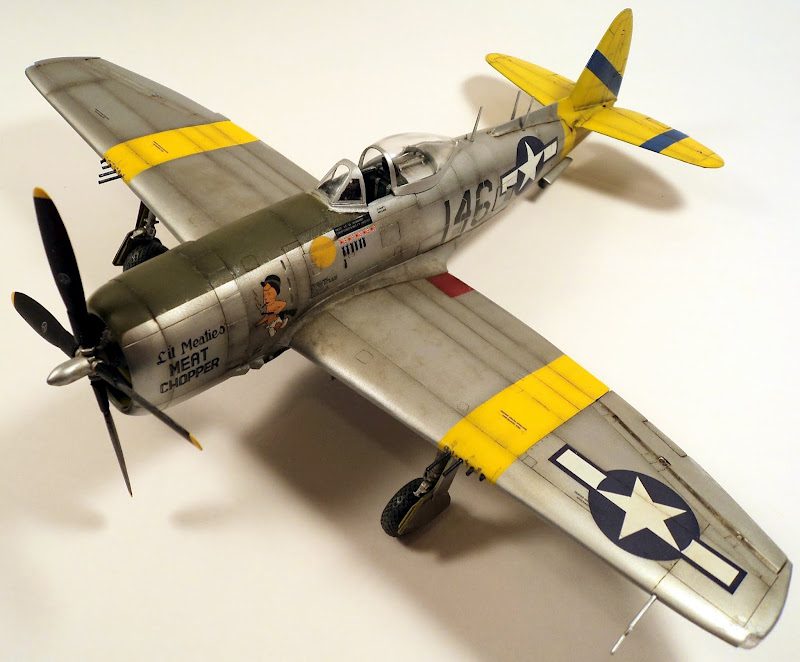
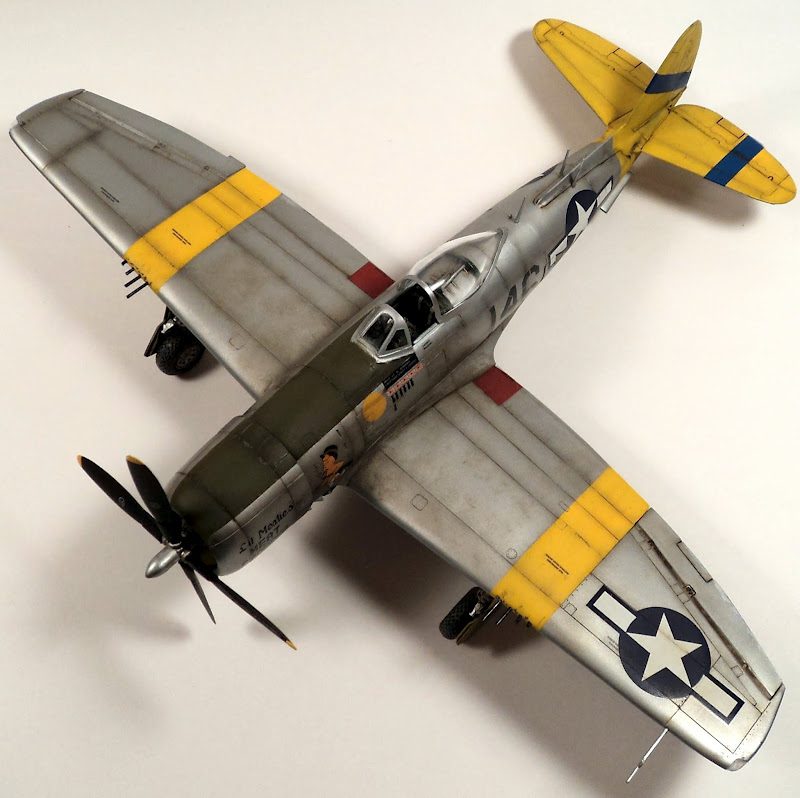
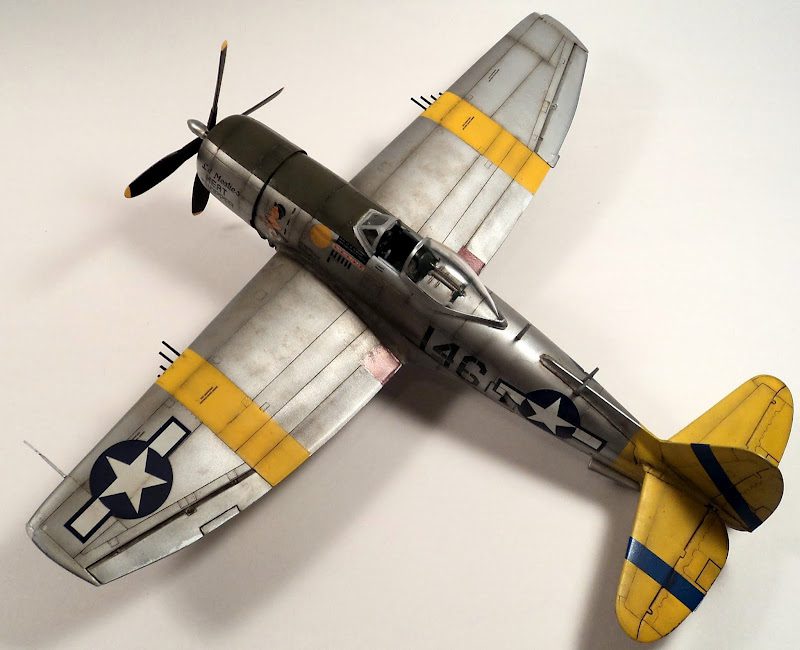
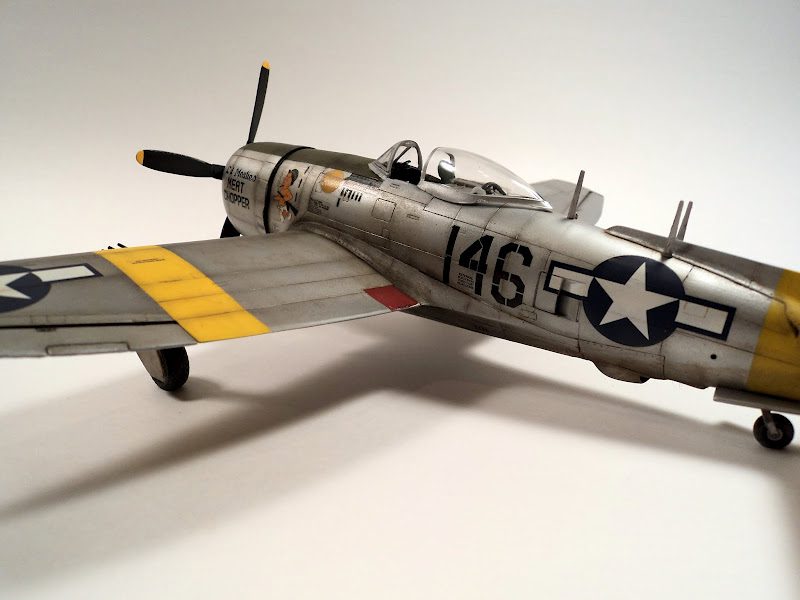
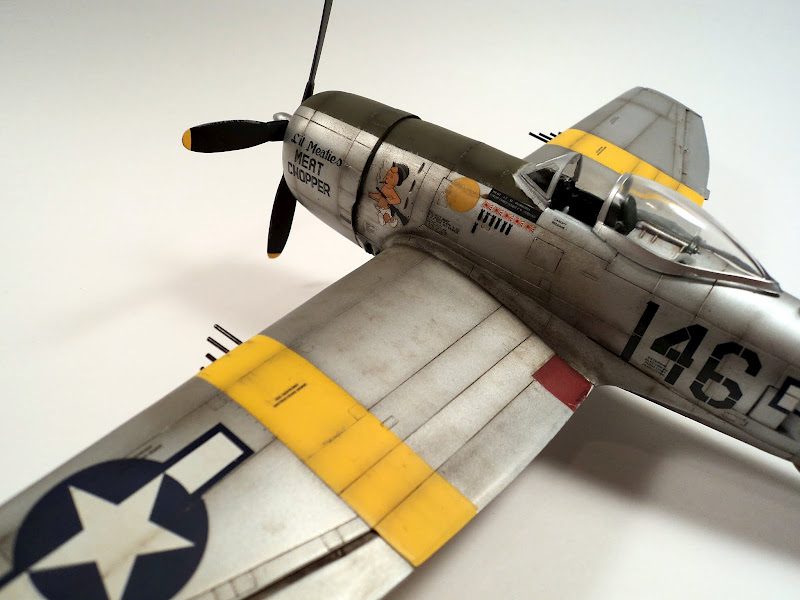
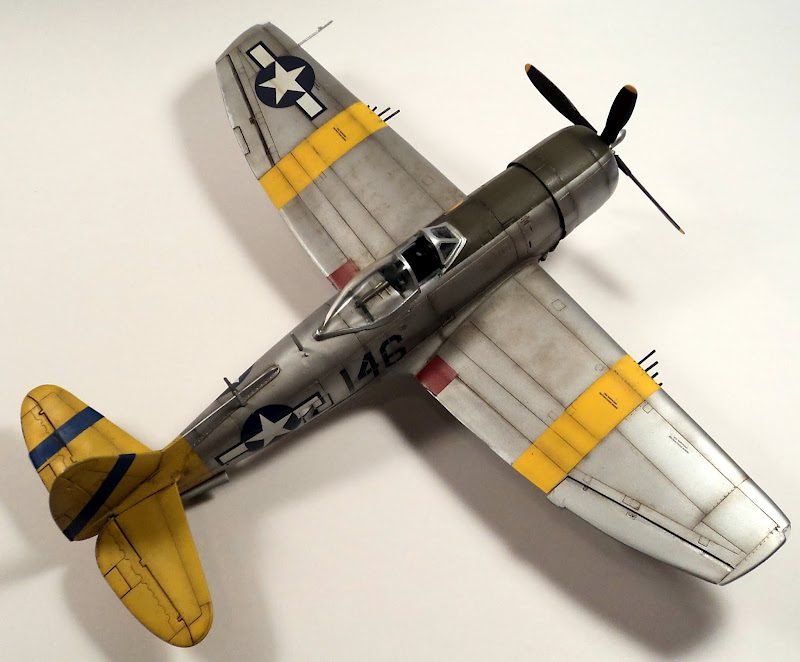

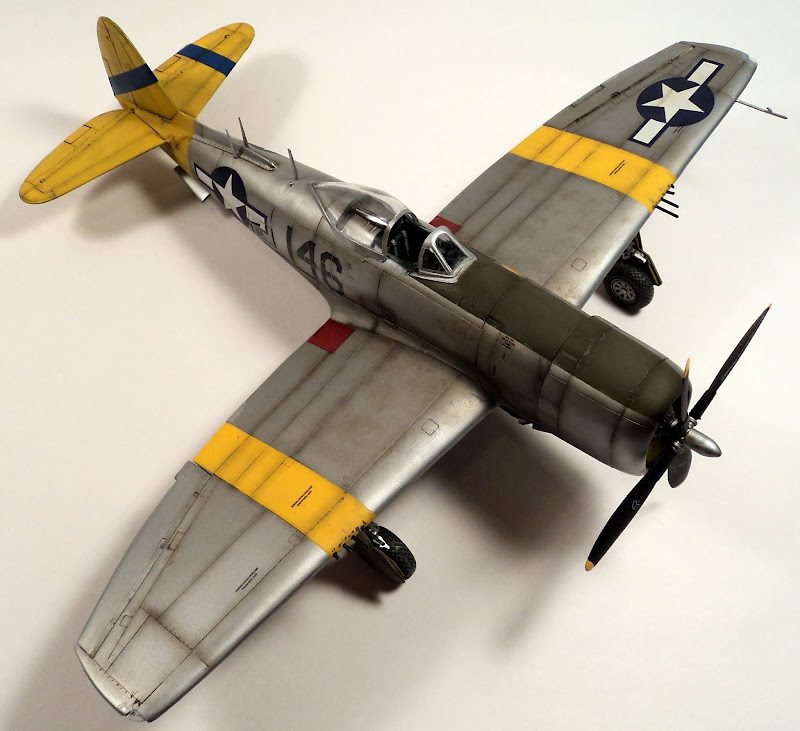
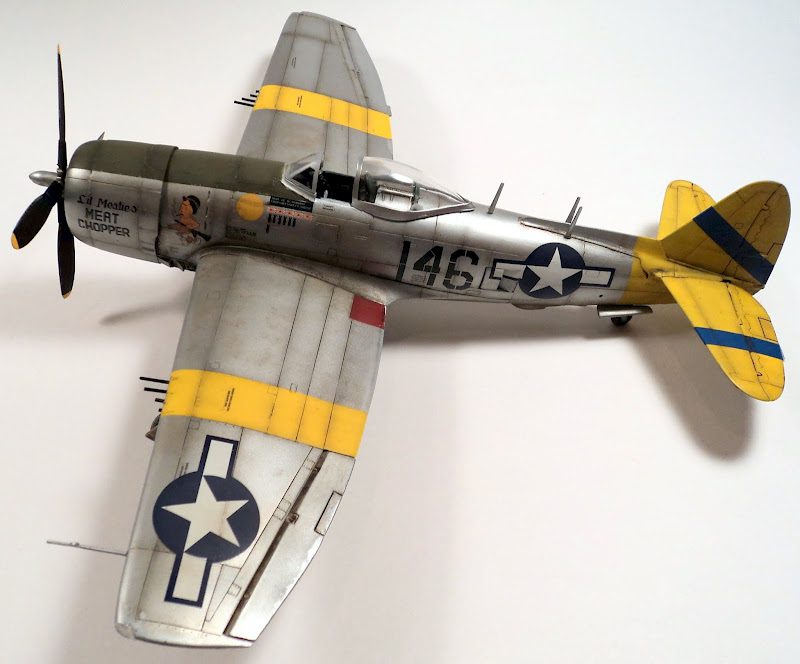


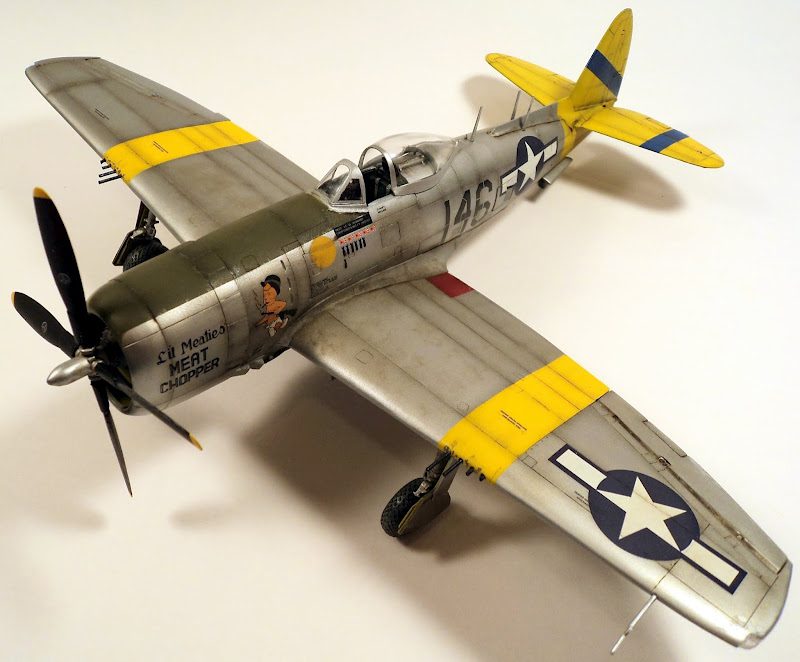
Leave a Reply